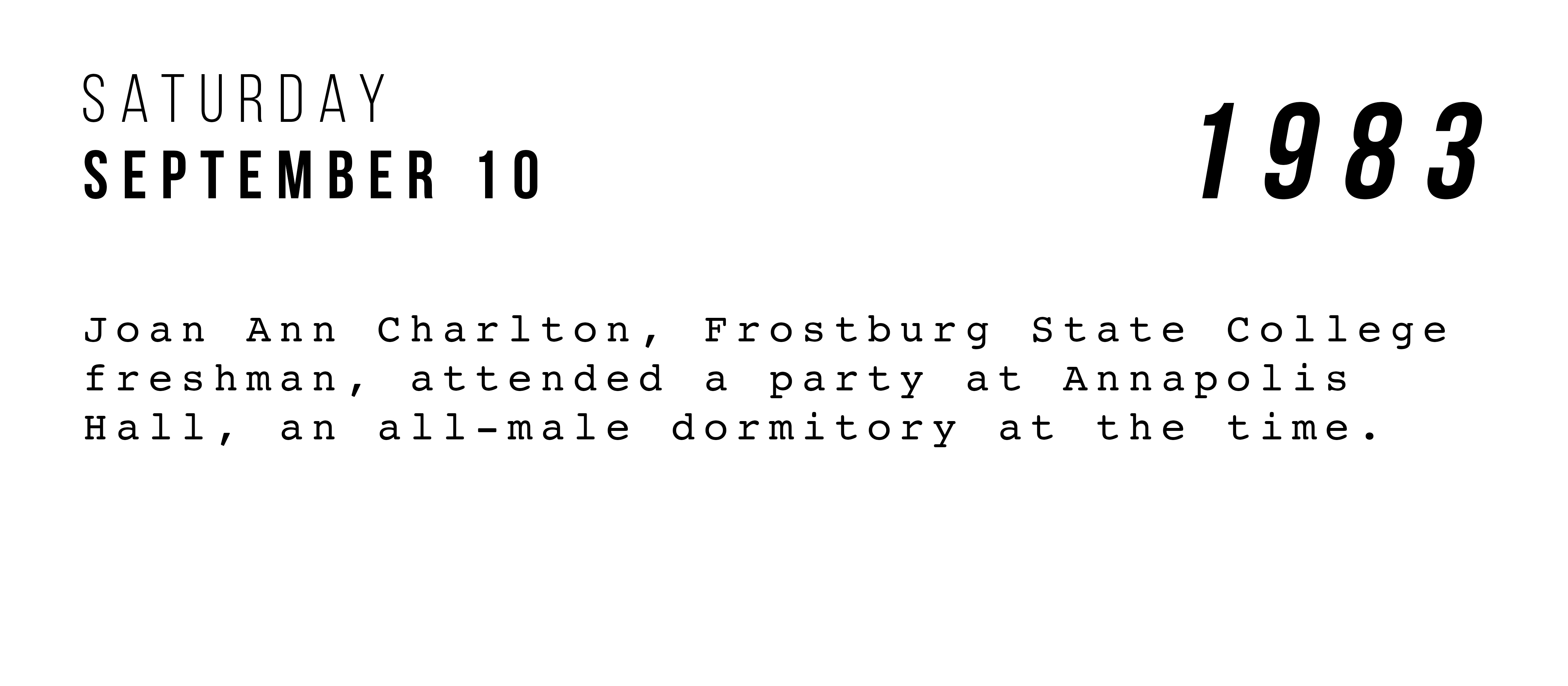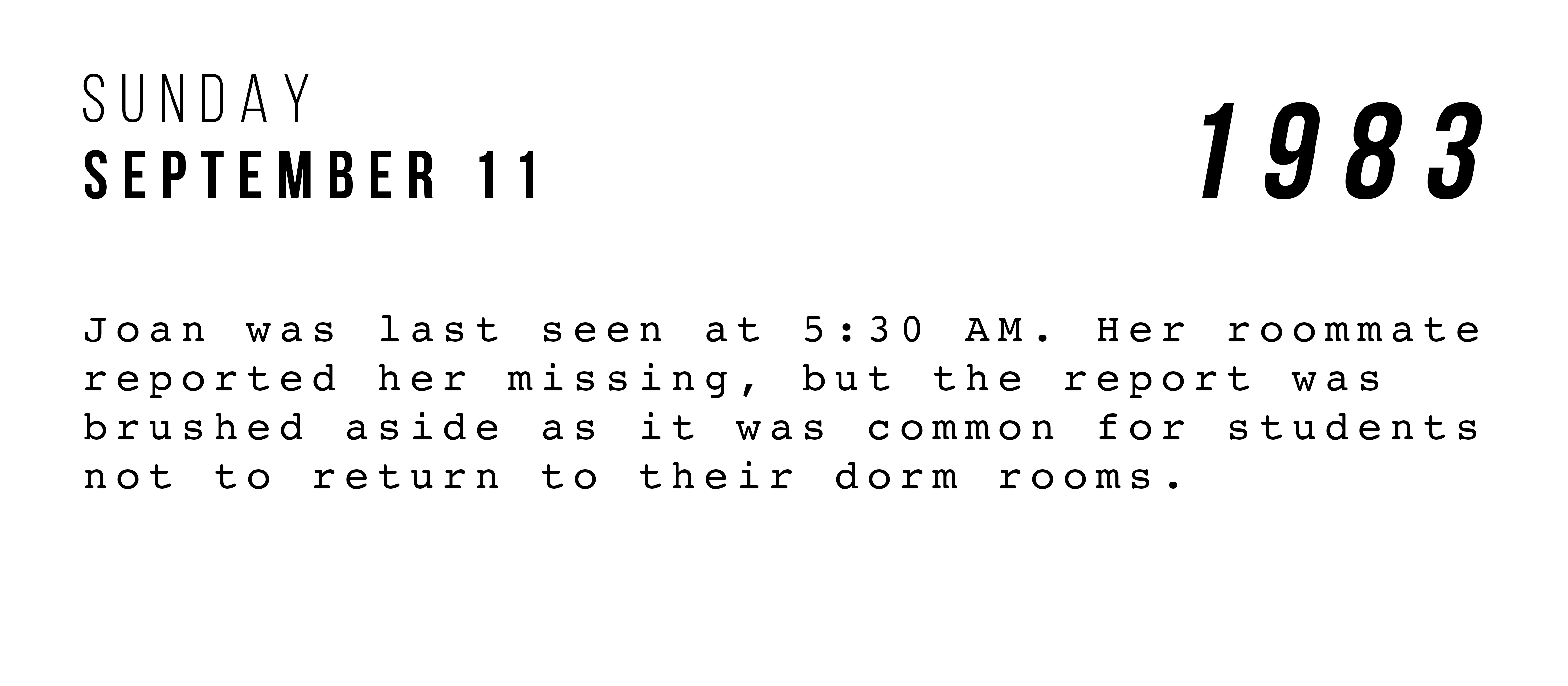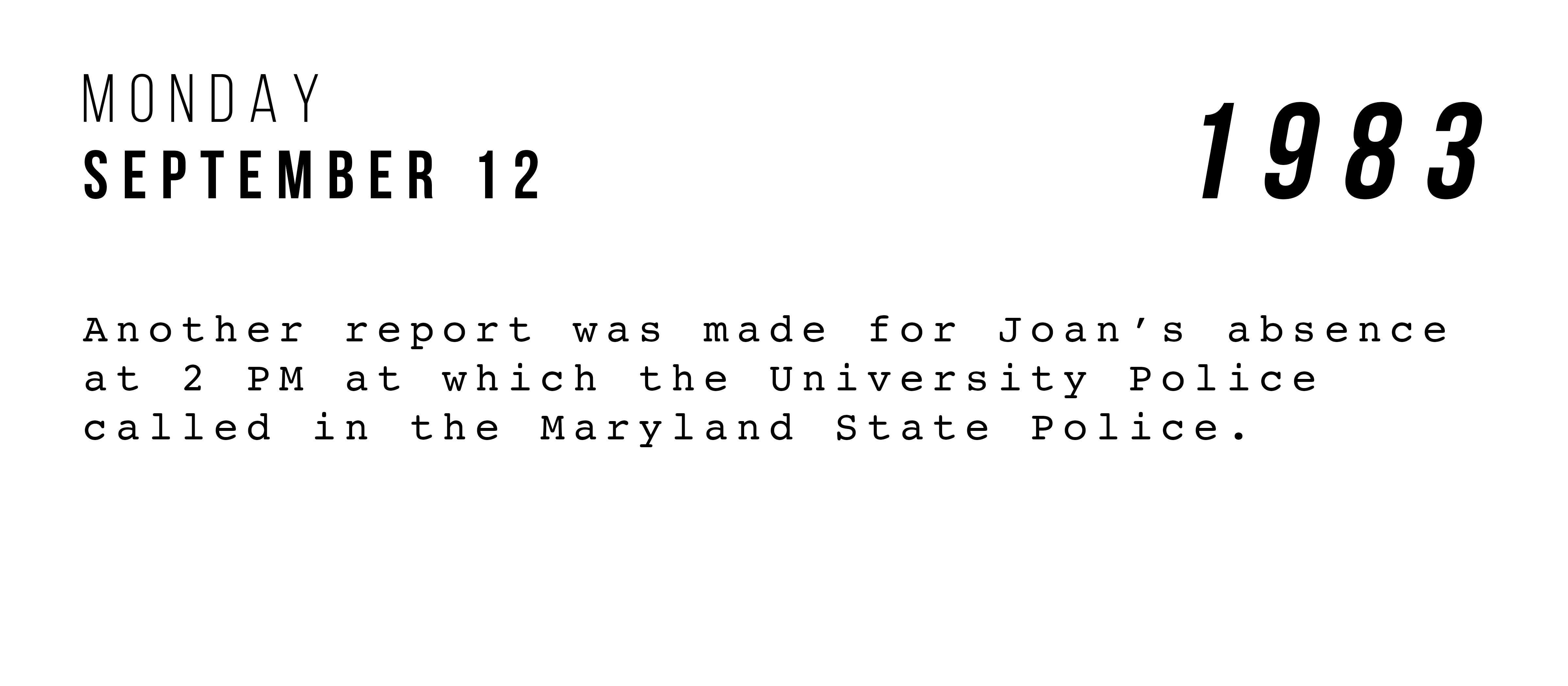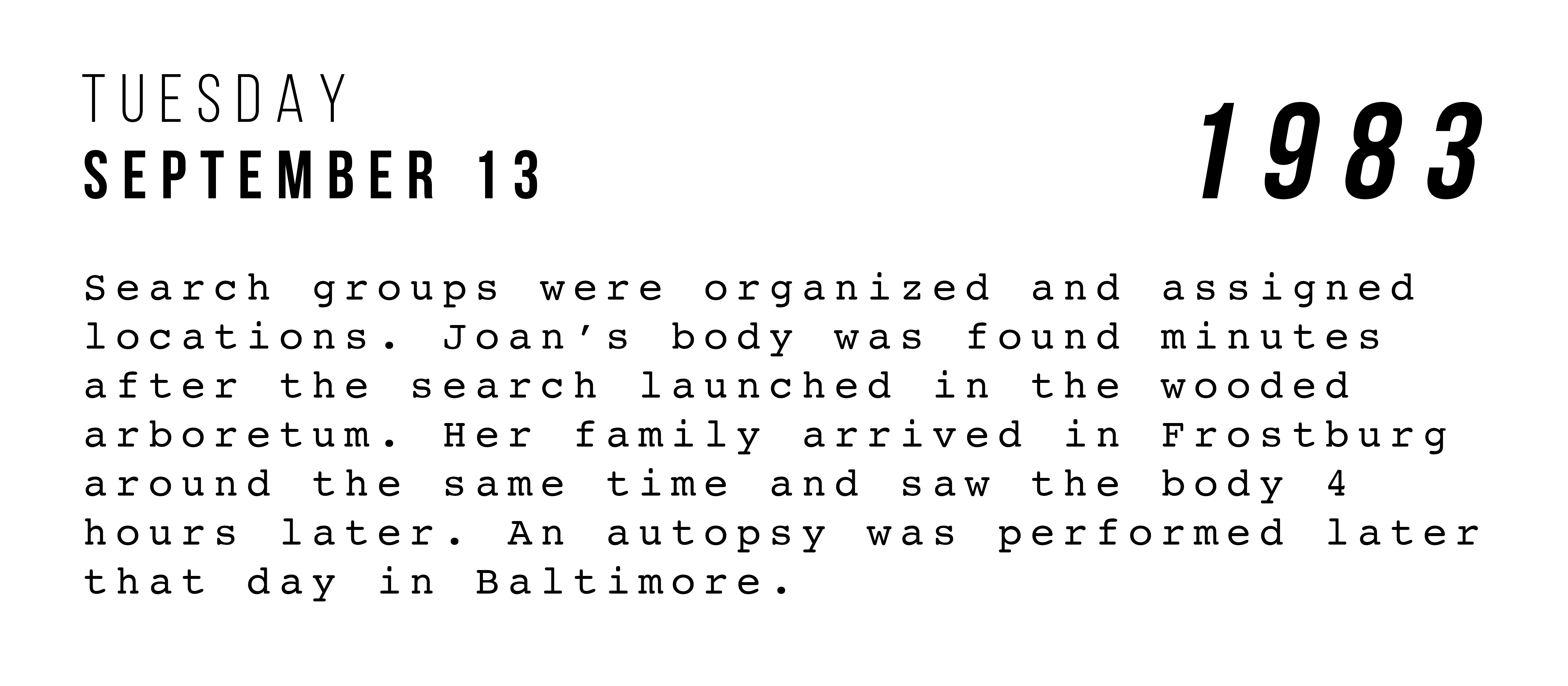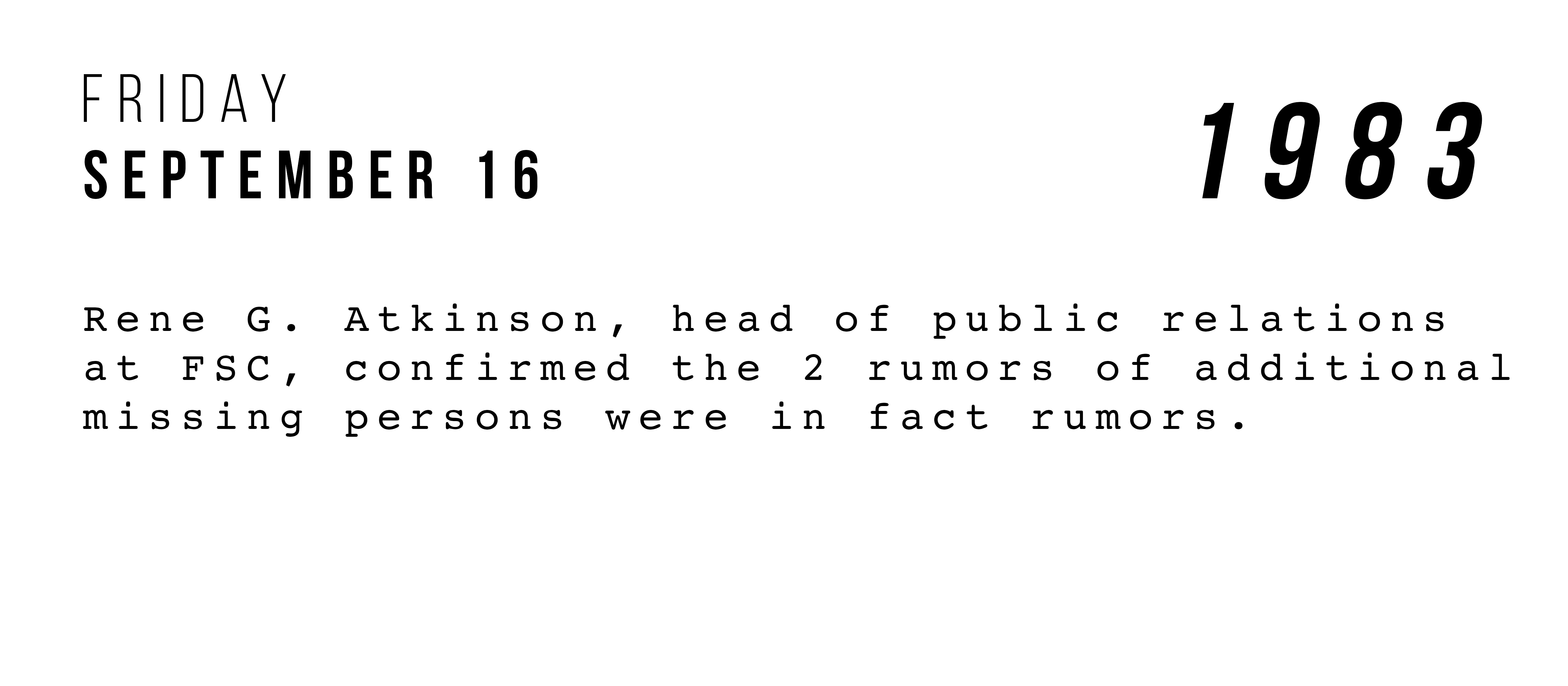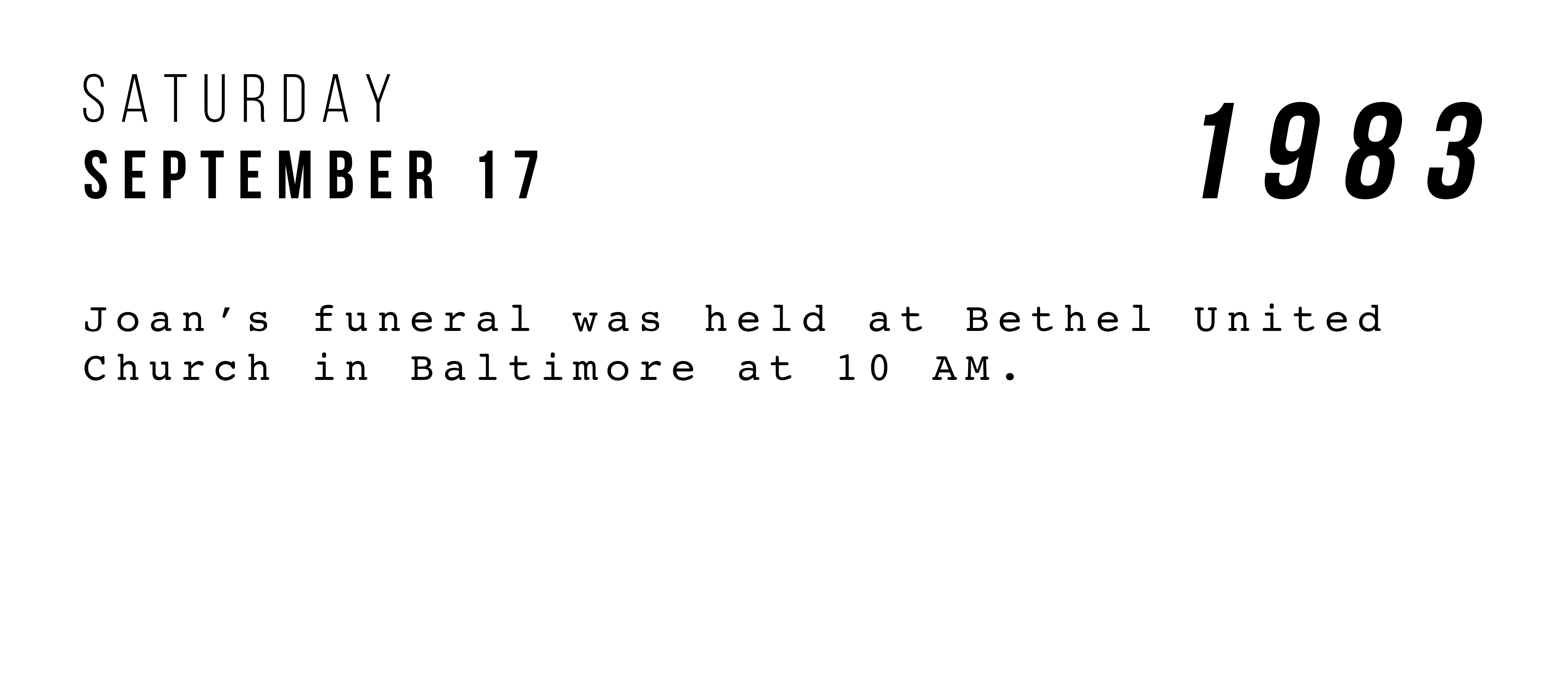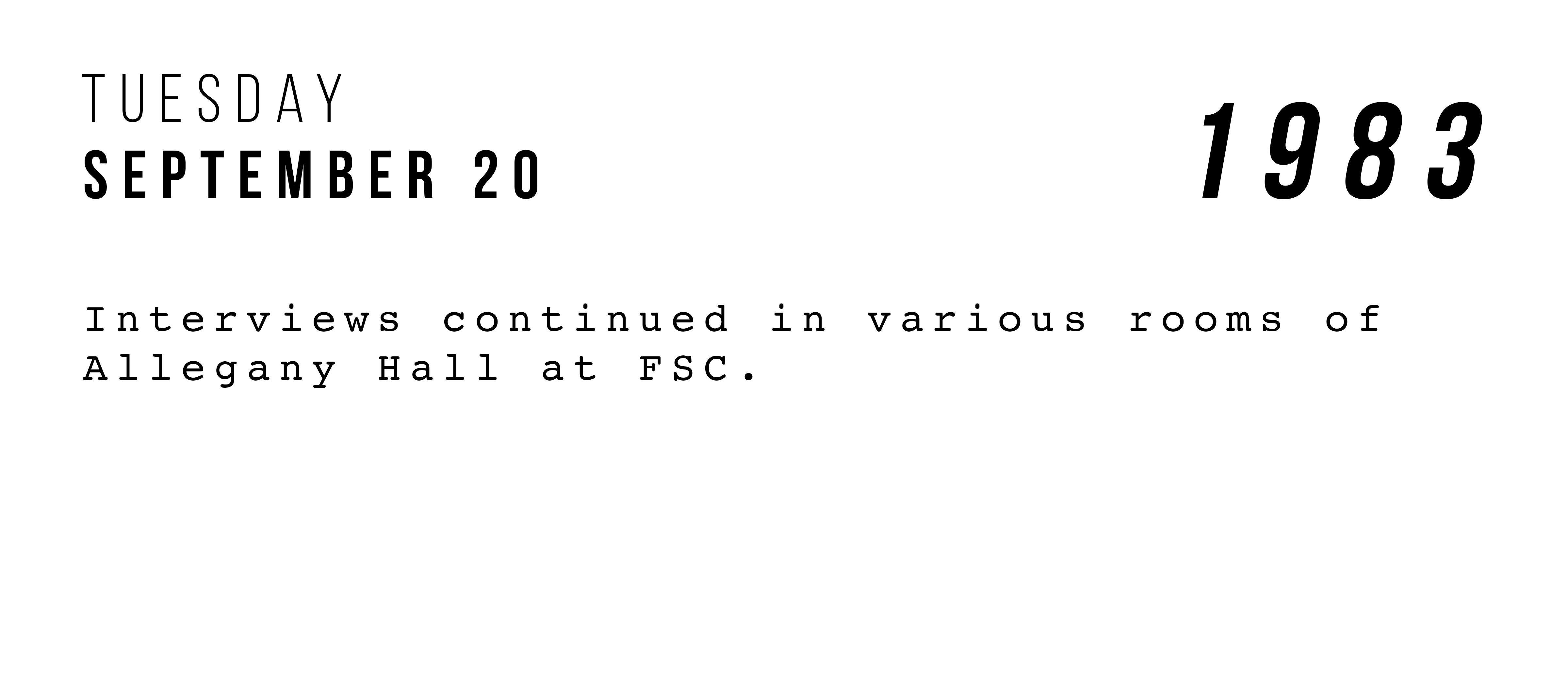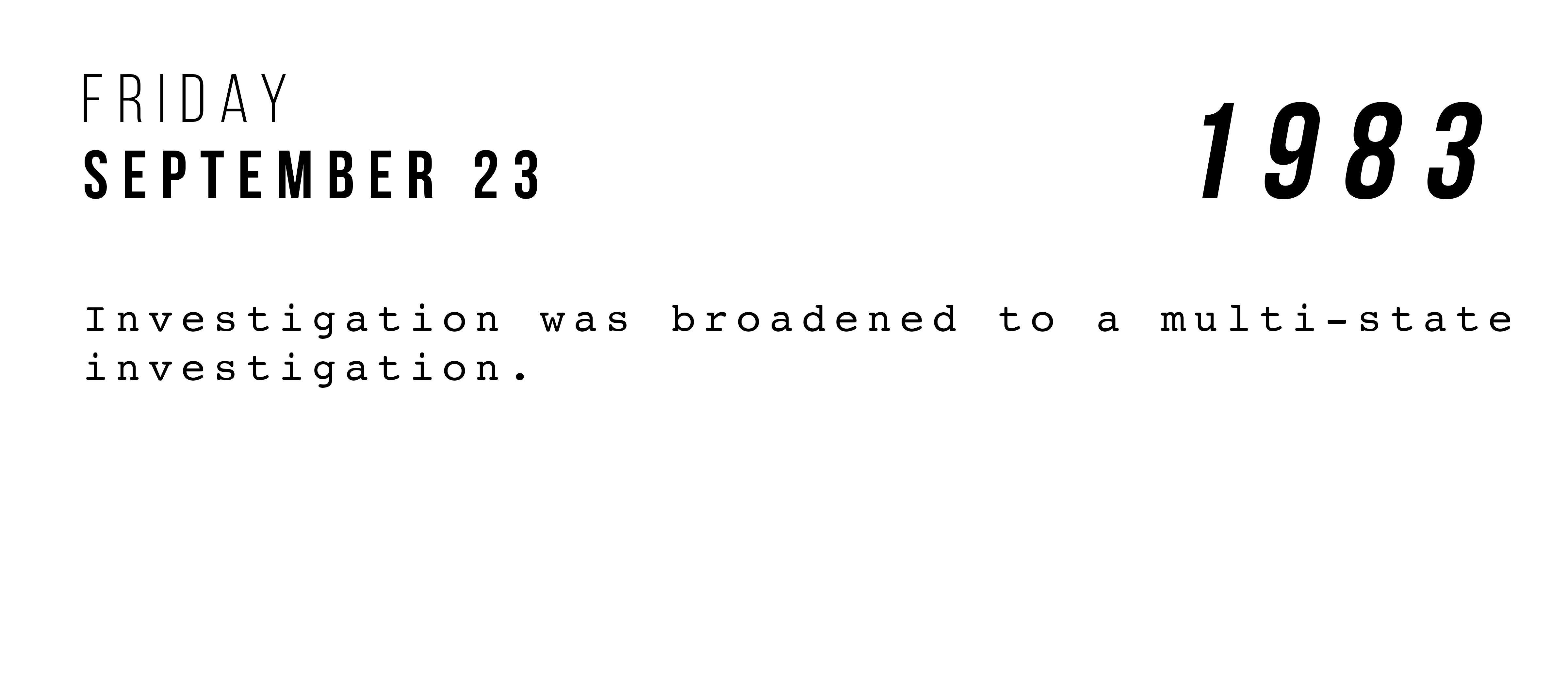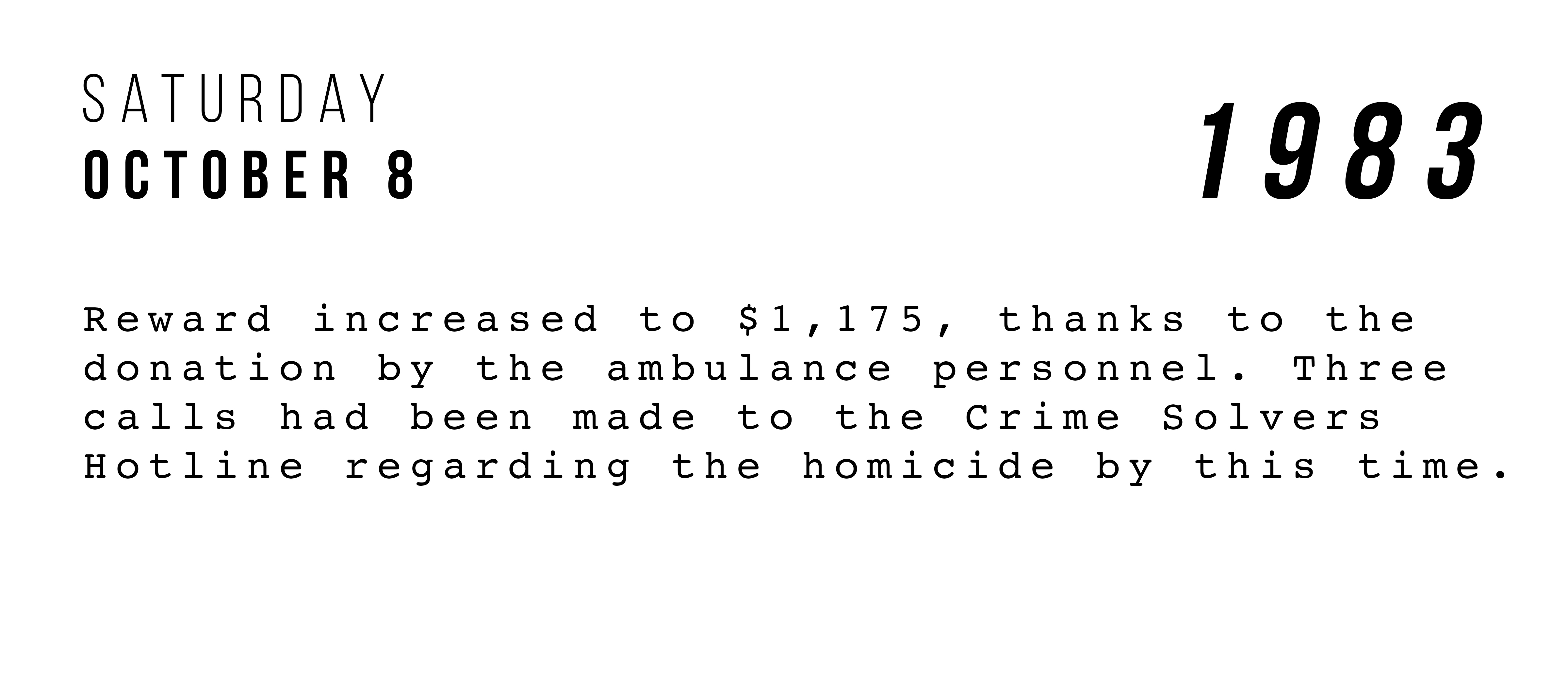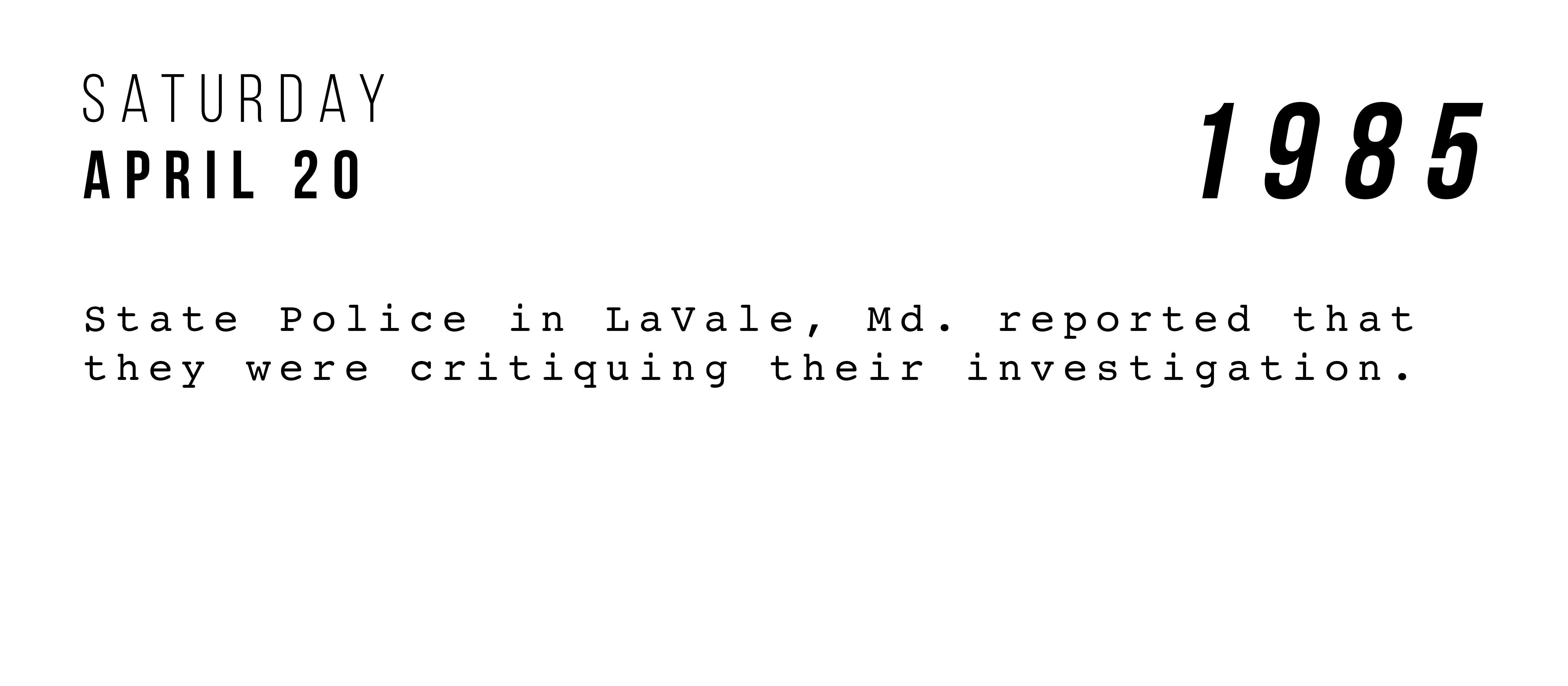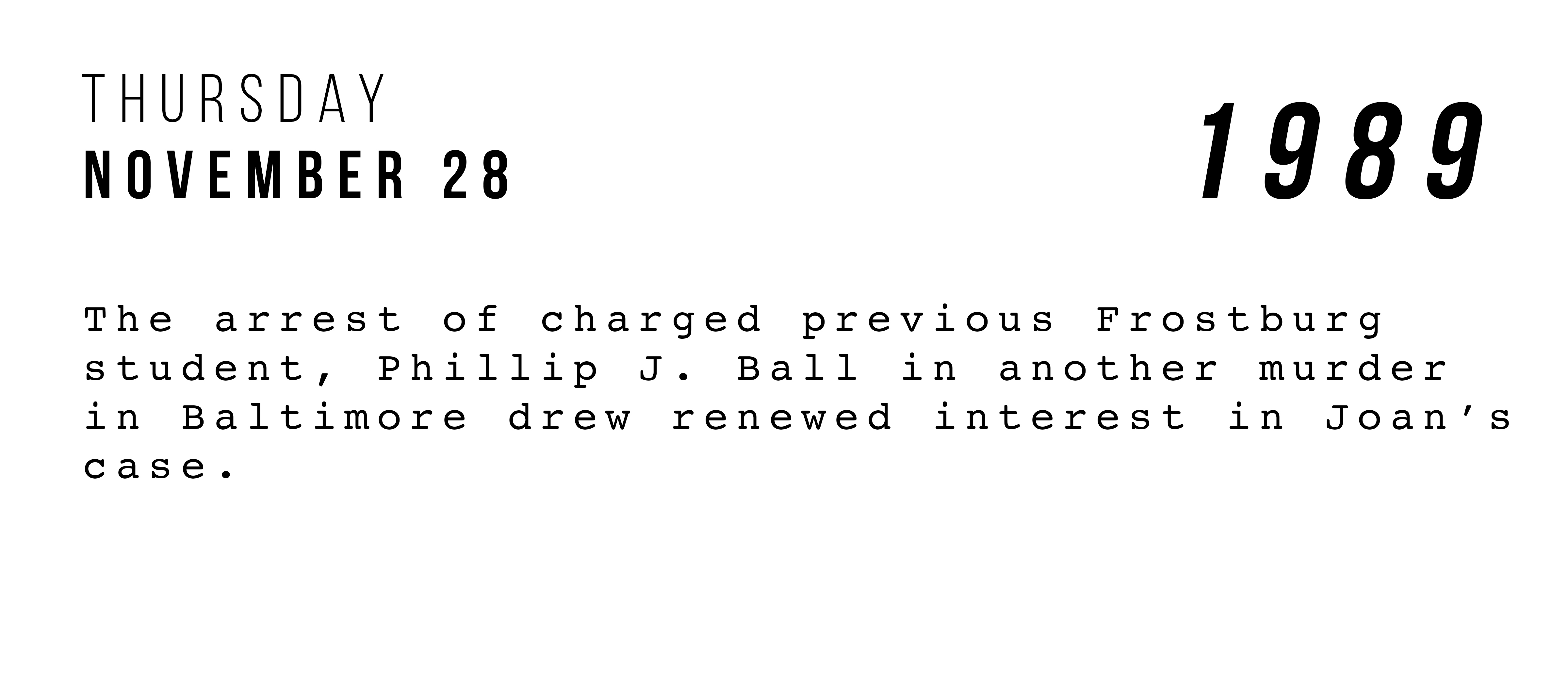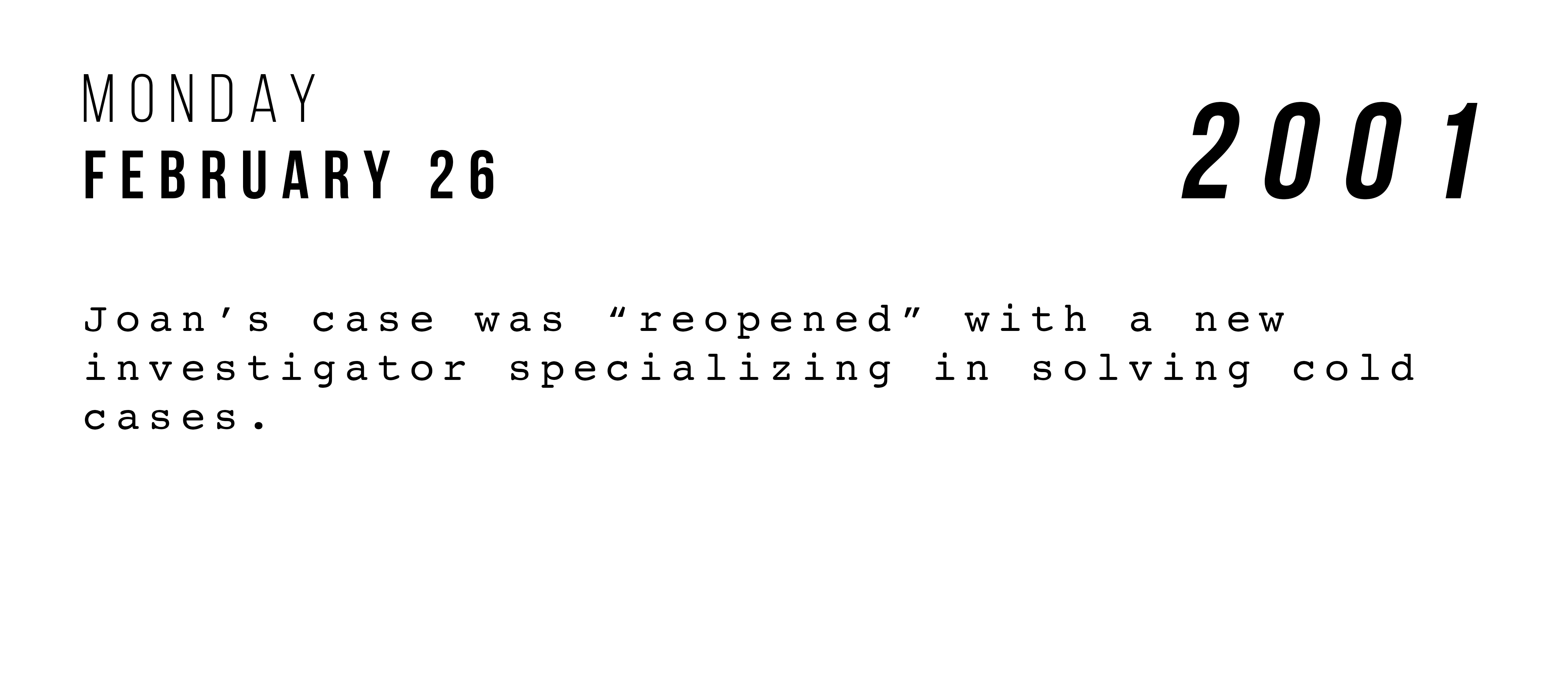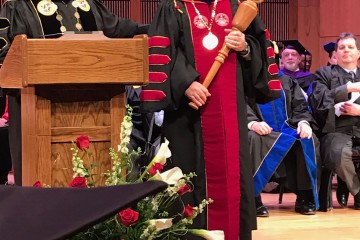Gone Too Soon: Revisiting the 1983 Murder of Joan Ann Charlton
A Comprehensive Collection of Information, 33 Years Later
Joan: Daughter, Sister, Student
A young energetic woman with an infectious smile, Joan Charlton was the youngest of five siblings who moved to Baltimore, Md. from Jamaica in the early 1970’s. She lived there with her loving siblings Monralez Jr., Marjorie, Eric, Sonia, and her parents Monralez Sr. and Gwendolyn Charlton. Joan was the first to go away to pursue an undergraduate degree, and in August of 1983, she attended what was then Frostburg State College in the rural mountains of Western Maryland.
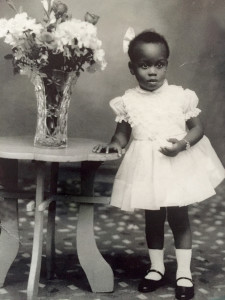
Less than three weeks into her burgeoning undergraduate career, Charlton was murdered on her college campus. The crime, which occurred on September 12, 1983, remains unsolved to this day.
Joan was a lively, kind young woman who wanted to better herself and those around her. Her untimely demise is just as important today as it was in 1983. Throughout the 2015-2016 school year at Charlton’s college, now Frostburg State University, various incidents on-and-off campus have made student safety a concern. In light of this, students at Frostburg State University, namely journalism students enrolled in English 436, Advanced News and Feature Writing, decided to revisit the life and death of Joan Ann Charlton both in hopes of remembering her legacy and reminding students of the caution necessary at institutions of higher learning. A complete list of Frostburg State students who worked on reporting, writing, editing or designing this story can be found at the conclusion of this piece.
Before Joan Charlton’s premature death, she enjoyed a life full of family—both in her home in Baltimore and during her childhood in Jamaica. Charlton family members and extended relations remain in the Baltimore metropolitan area and fondly remember Joan.
She was well thought of by the people that met her and loved greatly by her family. Her sister Marjorie said, “When you see her, there’s just a glow. When something was wrong you could see it on her face. There was nothing anyone asked her that she would not do for them. She was so giving.”
The memory of Joan Charlton, while difficult to distance from her unfortunate end, is highly characterized by her genial nature and personality. Sonia Charlton, Joan’s elder sister, stated, “She could always talk to people, she was outgoing like that. She would tell my mom ‘You got to hold your head and say something nice’ so she would always said good morning to everyone.”
As an individual, Joan was highly motivated and focused on academics and her family. Her parents were comparatively strict throughout her upbringing—a potential effect of the Charlton’s immigration to the United States. Sonia said, “My mom is old school, she used to do the same things the same way. Everything had to be in line before you could step outside. My mom made all of Joan’s clothes. Our mother made her come home right after school every day.”
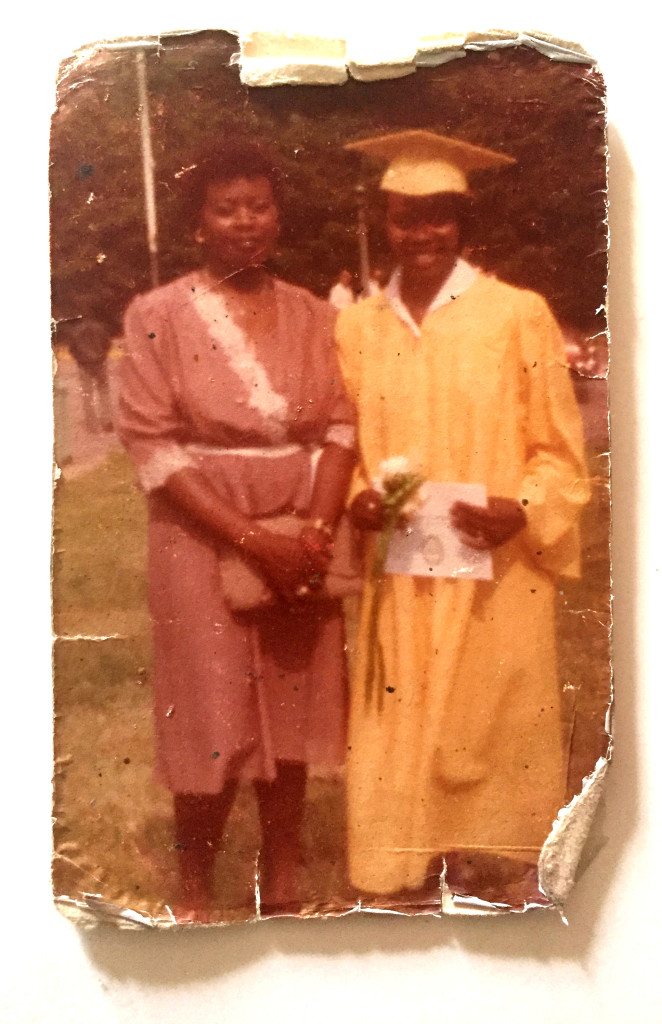
A first generation college student, Joan was the very first member of her family to pursue an undergraduate degree. The valedictorian of her high school, Eastern High School in Baltimore, Md., she tutored in math after school and was interested in technology. Her mother, Gwendolyn, encouraged Joan to attend college. After receiving a lucrative offer from Frostburg State College as a result of her academic excellence, Charlton committed to the institution in the hopes of participating in a new academic program unique to Frostburg, Charlton’s sister, Marjorie, stated. In Charlton’s “Faculty and Peer Advisor Information Form,” one of the many pieces of paperwork she completed as an incoming freshman, Joan noted her hopes for her future, stating: “five years from now, I would like to pursue a career in computer systems analytics.”
Outside of school, Charlton spent most of her time at home with her mother. Sonia Charlton said, “She was a good cook! She would come home and cook for my mom all the time. Joan would fuss at her to get her to try something different.”
Reconstruction of the Murder
To understand the significance of Charlton’s life, death, and current relevancy, it is helpful to reconstruct, to the extent possible, the fateful September nights that cumulated in the news of her death.
According to newspaper reports of the time, Charlton was last seen on Sunday, September 11, 1983 when she went to Annapolis Hall, an on-campus dormitory, with nine friends to do laundry while they attended a party in one of the rooms. Reports state she was seen leaving the building around 5:30 a.m. Later that night, Charlton’s roommate called police to report her as missing.
On Monday, September 12, Charlton did not attend class, prompting her counselor to contact the Charlton family to check if she had gone home for the weekend. This turned out to not be the case. The same Monday, Charlton was officially reported missing to Residence Life by her roommate. At this point, Residence Life called the police to ask them to conduct a search.
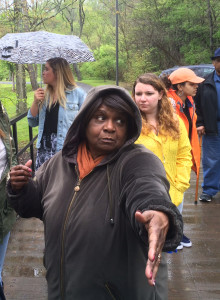
On Tuesday, September 13, nearly 48 hours after Charlton was last seen, Chief Robert Merican called in 15 Maryland State Police officers, as well as State Trooper Carl Skidmore, who was in charge of the Maryland Crime Scene Task Force at the time, to assist in the search for Charlton. Half of the search party went to the left of a foot bridge located in the on-campus wooded arboretum, while the other half went to the right—each walked an arm’s distance away from each other while scanning the ground. Gary Love, Residence Life Administrator and member of the search party, reportedly spotted a blue laundry bag that contained Joan’s clothing, including the clothing she was last reported wearing. Skidmore marked the spot and the party continued with their search.
The search stopped when the search group containing Carmen Jackson, then the Residence Life Director, and Dr. Tom Bowling, then the Associate Vice President of Student Affairs, discovered Charlton’s body. Bowling, who recently served as the Interim President of Frostburg State University, recalls the day with a significant amount of detail. Jackson, now the president of the Allegany County chapter of the NAACP, remembers discovering Ms. Charlton with a certain degree of unfortunate familiarity, noting: “I already have nightmares still of what I did see.” Noting the macabre nature of the search and what the parties were expecting to find, Jackson recalls being instructed to be particularly observant regarding any (then potential) remains: “they said, make sure you look carefully because she was dark-skinned and her body parts — they didn’t say leg, they said body parts — could look like a tree.” Within two to five minutes of beginning the search, the pair discovered what would later be confirmed to be Charlton. “We were prepared to be out there for a while,” Jackson noted. However, “within minutes” her remains were found. Bowling described his recollections, stating: “her body was mostly covered by leaves and the only things that I remembered… there was no question that I was seeing the leg of a human.”
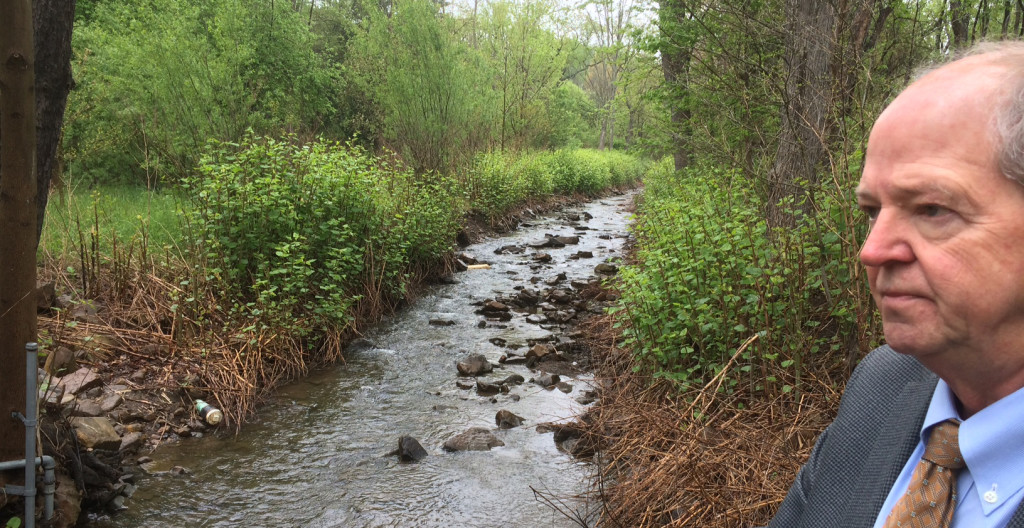
When they joined Jackson and Bowling on the scene, Officer Skidmore requested that an officer with first-aid experience check for a pulse. The officer walked through the water towards the body when he noticed environmental damage to the remains, including the presence of maggots. It was then clear that she was deceased.
It was not until after the discovery of her body that a pool of blood was discovered near the footbridge in the woods—a footbridge a generation older than the current structure, described by Bowling as smaller and further upstream. It is speculated that Charlton was murdered where the laundry bag was discovered, as there was a large pool of blood in the same area. It is possible that the murderer carried her body under the bridge and placed her where her body was later discovered with 19 stab wounds.
Investigation: Leads, Suspects, the Ever-Colder Trail
The investigation regarding Charlton’s killing has fallen short for nearly 33 years despite various investigative efforts.
Looking back on Bowling and Jackson’s discovery of Charlton’s remains, the weather conditions of the day can be noted for immense amounts of rain. It’s probable that much of the evidence was altered or erased due to the undesirable, inclement conditions.
Members of the search party were quickly removed from the area so the scene could be preserved as best as possible, Bowling and Jackson remember.
They further state that, in the coming days and, indeed weeks, all on-campus students were interviewed by law enforcement officers.
In a September 16, 1983 correspondence to off-campus students, Frostburg State College President Nelson P. Guild stated of the investigation: “Thus far, investigators have interviewed all students residing on the campus. They wish now to proceed with interviews of off-campus students, faculty and staff.”

Bowling noted of the off-campus student body, “the population of off-campus students was not nearly as large as it is today.” Jackson recalled checking off dormitory residents as their interviews were conducted; thousands of students were questioned in efforts to gather information relevant to the case.
Shortly after Charlton’s death, her family insisted that the NAACP become involved with the case and brought them to Frostburg to ensure due diligence on the part of law enforcement. A news article titled NAACP Head Criticizes Murder Probe from Sept. 23, 1983 shared the thoughts of Emmet C. Burns, then the regional head of the NAACP, stating: “If this were a white student, I don’t believe it would be the same. I don’t know, but I believe so.” Gwendolyn Charlton, Joan’s mother, was quoted by saying she “thought the investigation was being handled poorly.” The NAACP and Burns had plans to meet with members of the family, state police, and campus officials later that day.
After being contacted regarding autopsy results by members of the student reporting team, the Maryland Medical Examiner’s office denied permission to release the autopsy on Feb. 29, 2016.
Without autopsy reports, suggestions of molestation, brought on by her nude corpse, cannot be confirmed. According to the Baltimore-Afro American, there was no murder weapon recovered near the remains.
Press Coverage, Suspects, and Leads Down the Road
The Baltimore-Afro American further reported “conflicting stories in the Sept. 12 murder.” Reporters from the organization asserted that students of Frostburg State College “do not completely agree with what police have reported. Students who are residents in the dormitory where the victim lived, told the AFRO Miss Charlton was last seen leaving her room wearing slippers and carrying a pillow case containing her laundry.” State Police Spokesperson Dan McCarthy confirmed that her laundry bag and slipper were found in the area of her body.
An AFRO interview with Winston Brown, Charlton’s brother-in-law and Sonia Charlton’s now ex-husband, asserted that Joan Charlton “did not know anyone in Frostburg, Md. She called home last week and told us she was not getting along with her roommate and was moving in another dormitory over the weekend. She was supposed to call home Monday and give us her new phone number but we never heard from her.”
An AFRO article from Sept. 24, 1983 stated a $1,000 reward was being offered by the Frostburg State College Student Government Association and the Allegany County Crime Solvers for information leading to the arrest and conviction of the person responsible for the death of Joan Charlton.
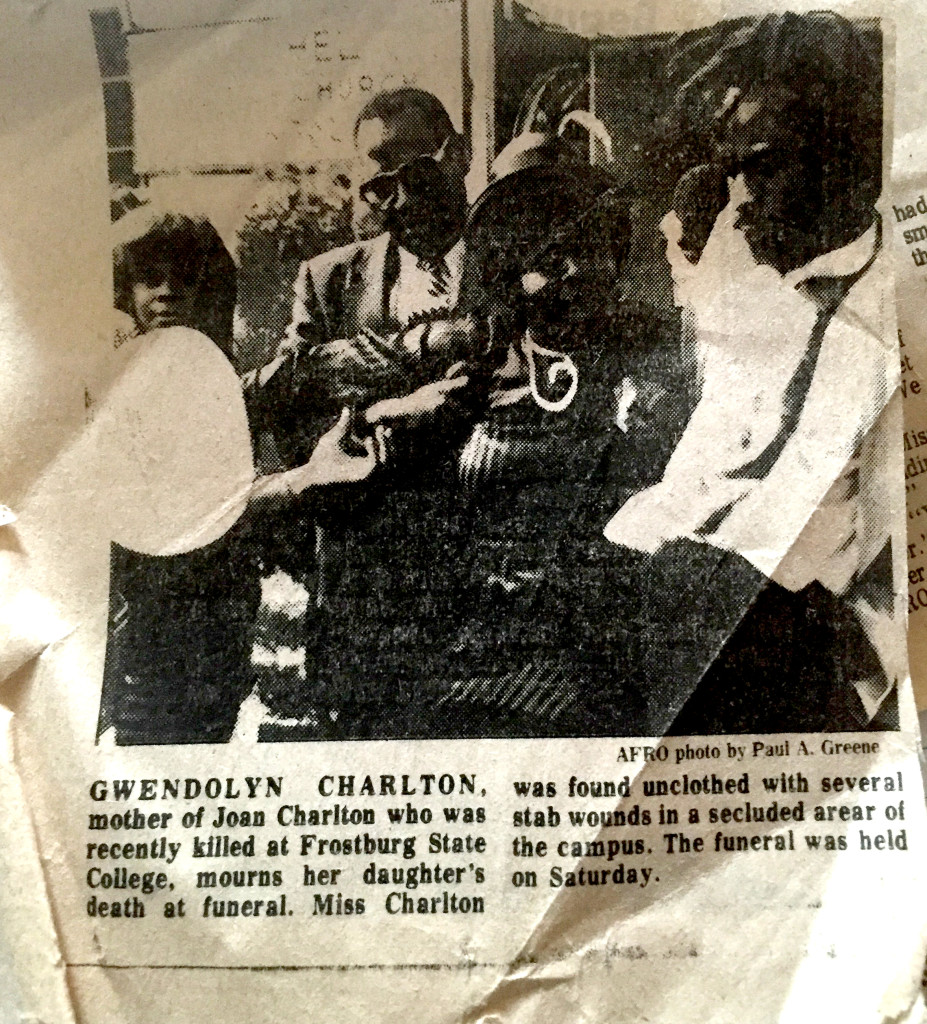
The Washington Post shared a statement on Oct. 21, 1983 stating that Maryland State Police “had questioned a man in the murder,” elaborating that “police also searched the man’s home under a warrant, but no charges have been filed.”
Coverage of the case was “reactivated” in an April 1985 Cumberland Times-News article. State Police First Lt. W.R. Presley stated in said article, “a rumor has been received by State Police stating the homicide may have started as a joke by a person or persons participating in an unregistered campus game of Dungeons and Dragons.” The article also reveals that the state police was seeking information “concerning a black male allegedly seen on the campus Loop Road the morning of the homicide.” He was believed to be a possible witness. Additionally, the article suggested an alternative sequence of events, stating that Charlton was overheard at 3:25 a.m. on the day she was found dead saying, “Just tell him to leave me alone.” Possible overhead crying was believed to be the victim. This account is unsupported in the contemporary news pieces of 1983.
A Cumberland Times-News article from November 28, 1989 reflected on the unsolved Charlton murder six years after the fact. Interest was renewed when Phillip J. Ball, age 31 at the time, was charged in the murder of FSU graduate Mary Anne Cipolla in Baltimore, Md. Cipolla was found strangled and bludgeoned inside Ball’s parents’ home. While police questioned Ball’s parents about the woman’s identity, Phillip arrived home from work. No motive was established for the slaying at the time of the 1989 article.
Ball and Cipolla were acquainted with one another, but not dating. Cipolla graduated from FSU in 1984 with a Bachelor of Science degree in English. Ball acquired a total of 76 credits at FSU, but was “in and out” of the college between September 1976 and fall of 1980. “The last time he took a course at FSU was in the fall of 1982.”
Baltimore City Police Detective Richard Garvey was contacted by officials in Western Maryland after the 1989 murder “to see if the case may relate to the murder of 19-year-old Joan Ann Charlton, who was stabbed to death on the Frostburg campus in an apparent sex slaying in September 1983.” Phillip J. Ball is currently serving a life sentence in Eastern Correctional Institution East in Westover, Md.
During the May 15, 2016 interview, Joan Charlton’s family recalled an unfamiliar face during her funeral service. Joan’s older sister Marjorie remembered, “At the funeral, there was a tall, heavy-set guy crying. And his mother said, ‘you have to let her go’ and they had to pry him away from her casket.”
Joan’s family, still to this day, has no name or identification for the individual.
According to “Hot on the trail of Md. ‘cold’ cases,” a 2001 article from The Baltimore Sun, “police initially had two suspects, but leads vanished and the investigation sputtered.” Retired State Police Sergeant Roger D. Cassell, who specialized in homicides, had plans to take a second look at Charlton’s case nearly 17 years later. According to the article, he said he’d “begin reading, looking for holes and potential leads. That’s always the first step: slowly pore over the files, sometimes twice.”
Legacy
Charlton’s death lacks much of the documentation and resolution expected of modern student slayings. With no culprit identified and no definitive sequence of events established, Charlton’s death remains shrouded in mystery to this day. With over 30 years having passed since the tragedy, the general lack of knowledge surrounding the case has given way to the growth of sometimes misinformed, falsified, or sensationalized accounts of Charlton and her death.
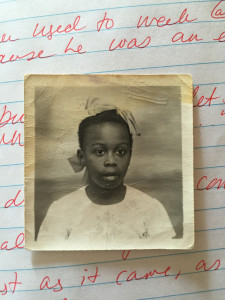
Charlton’s legacy on the Frostburg State University campus is complicated. When contrasted to fellow student Stephanie Ann Roper, Charlton’s legacy even seems absent. Roper, who was murdered downstate in 1982, has been memorialized in the Fine Arts building on the FSU campus through the dedication of what is now known as the Stephanie Roper Art Gallery. Similarly, former Interim President Harold Delaney, whose death was also violent and unexpected , has been commemorated through the dedication of the clock tower area in mid-campus. For whatever reason, no physical commemoration of Charlton exists on the Frostburg campus.
The lack of campus documentation is compounded by the open nature of the investigation of Charlton’s death. As an open case, officials refuse to release law enforcement case files, adding secrecy to an already hazy situation. Though student reporters revising the case were denied police records, detailed accounts of the police investigation from several sources close to the case were obtained. No source, however, would agree to any of that information being published, on the grounds that it could jeopardize an ongoing investigation — one that, if it is indeed ongoing, will be 33 years old this month. With an unresolved status and confidential nature, the investigation contributes little to Charlton’s legacy or memory on the FSU campus.
Consequently, Charlton’s legacy has relied on word of mouth by way of FSU students who are increasingly removed from Charlton’s generation and time. Few individuals remain that possess primary knowledge of the incident. Historically, non-official campus efforts to remember Charlton, while admirable, have included unverified accounts of the incident or relied on the oral tradition of her death.
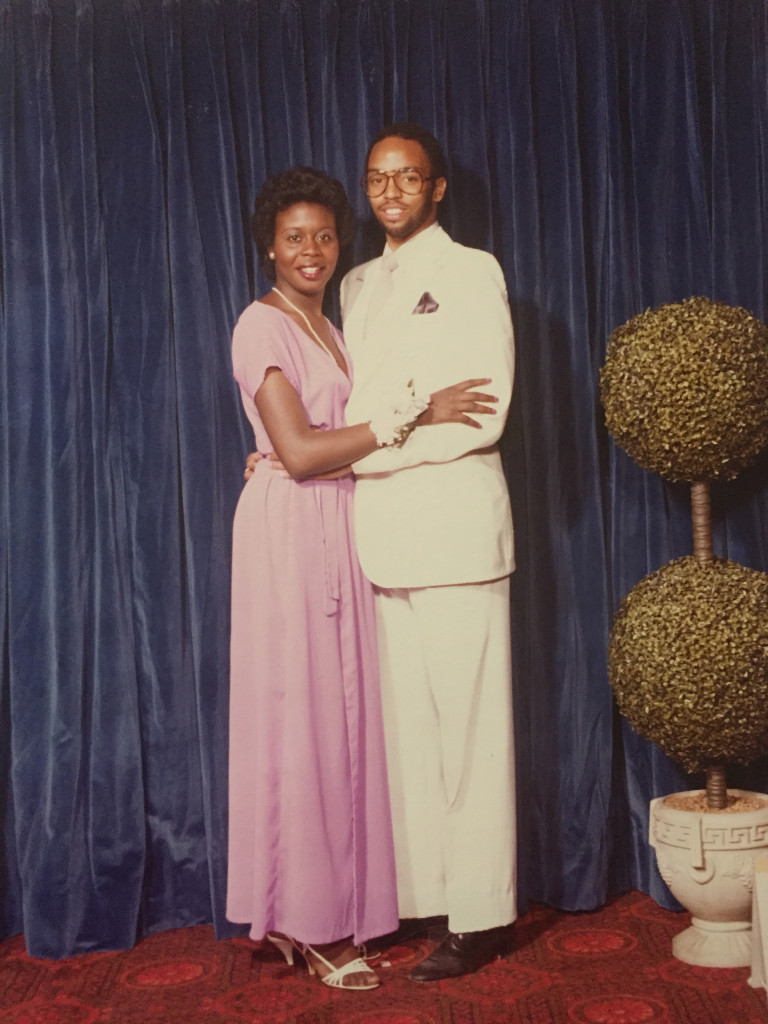
For the Charlton family, Joan’s legacy is one of warmth. While looking at family photos now decades old, Charlton’s extended family expressed both the fondness with which her memory is cherished but also the pain of her untimely death. Looking back to the late 1970’s and early 1980’s, a calmly emotional Sonia Charlton recalls taking Joan to her high school prom and, later, dropping her off for a Frostburg-bound bus. Sonia stated, “I just remember driving her to the bus stop…” Joan’s sister Marjorie recalls dreaming of Joan after her death, stating: “When she had just died, I dreamed about her. In the dream, she put on a black jacket and came downstairs. She asked me, ‘Can I get a peanut-butter-and-jelly?’ I said, ‘Go ahead.’ That was the last time I dreamed about her.”
Considering national coverage of campus violence, and especially incidents on the Frostburg campus, it is essential to remember Joan Charlton’s life and death through verified sources and reports. Remembering her as her family remembers her reminds us all of the innocence with which we go out into the world, the importance of family, and the caution necessary for us all to exercise.
While the case of Joan Charlton’s murder, now 33 years old, may never be solved, her memory deserves as much truth as can be provided. The hope of the student reporters who have pored over newspaper articles, met with the Charlton family, and visited the scene of the crime, is that centralized information on Charlton’s life, death, and the subsequent investigation, will provide a verified medium in which to remember her as an individual and as a cautionary tale. Charlton’s sister Marjorie addressed her willingness to revisit her sister’s death in saying that her story needs to be told; “If it can help somebody else, even though it didn’t help her.”
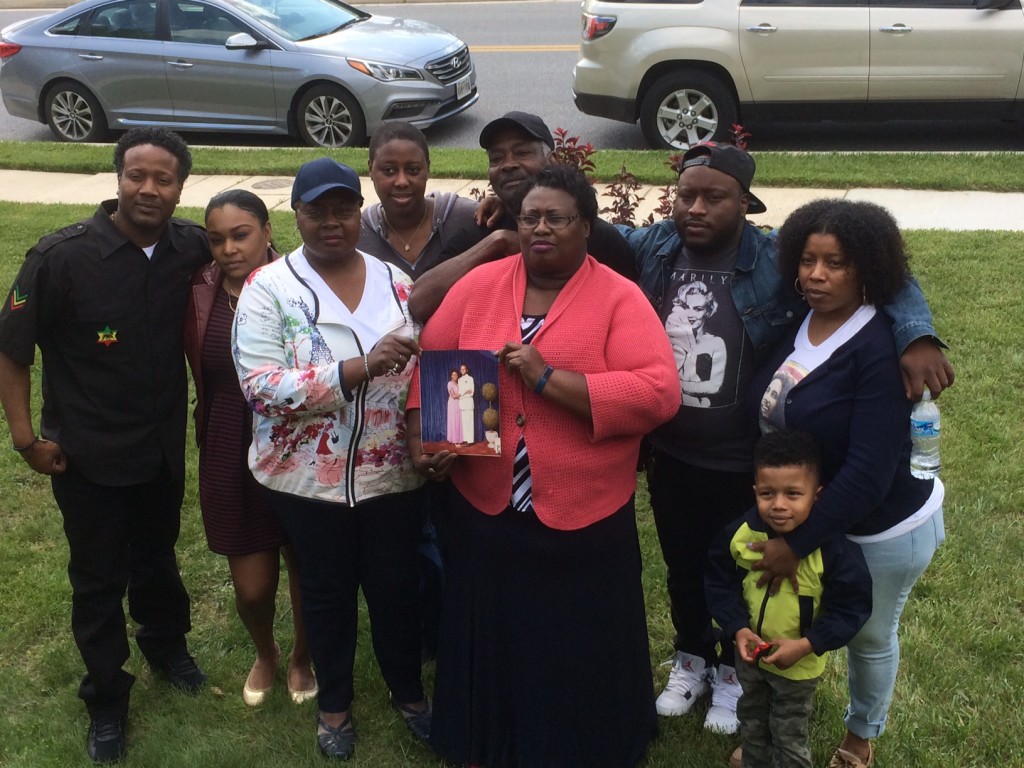
Resource: Sliding Timeline
Resource: Maps

Following is a list of students responsible for writing, editing, and designing “Gone Too Soon: Visiting the 1983 Murder of Joan Ann Charlton.”
Megan Alvarez
Jordyn Chaplin
Nicholas DeMichele
Dominique Elias
Niki Folk
Franchesca Garland
Dana Gordon
Carolyne Jonas
Harry Lichtman
Catherine McCartney
Tevin McDonald
Emily Michael
Brandon Richardson
Justice Sifford
Cesi Taboada
Irimar Gabriella Waters
Madison Wilson


